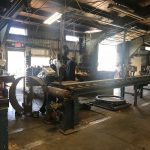
The world of 2018 is the world of NOW. Whether its consumer goods, food, transportation, even dating, we expect everything NOW. We all know that in this winner-takes-all world, the companies that have real-time agile operations throughout their entire value chain will prevail. And yet, time and time again organizations fail to introduce operational innovation into their current operations.
Why is this? We see many companies that have been around a very long time, often over 100 years, that have been doing the same thing the same way most of that time. Their workforce has been doing the same thing that same way. The past several decades have been focused on cost accounting and cost reductions as a remedy to investment community pressures and global competition. We have squeezed about as much juice as possible out of that approach.
Unfortunately, that has resulted in workforce reductions that leave no one left to support experimenting with new operations technologies. Teams that are maxed out just keeping the trains running on time are then tasked with also tracking, researching, and experimenting with new technologies. This results in the optimism of early engagements dying on the vine due to no one’s fault. Yet we know our future competitiveness will rely on real-time data feeds from everywhere via I IoT, robotics, edge intelligent automation, and big data analytics.
One solution path is to set up a small, dedicated team for thinking out-of-the-box about current operations and task them with innovation experiments, ideally completely non-disruptive to current ops. The history of change and innovation is rife with dedicated “skunkworks” teams from Lockheed’s SR-71 to the Macintosh team with the pirate flag flying above the building. Staffing that team with a mix of younger, more tech-savvy workers and experienced “old-timers” has many benefits beyond the obvious. The existence of these team(s) can help with attraction and retention of the soon-to-be prevalent Facebook generation in our vital manufacturing facilities. They also provide a forum for knowledge transfer across the generations. Other solutions we see attempted are using outside consultants from the business, IT, and system integration realms. This can be a great help to speed up the front end of the innovation and change process, but without that internal dedicated team working in concert with the outside team, it oftentimes just “kicks the can down the road” resulting in the same dead end. We all know how to do this: Imagine if you had a blank sheet of paper today, what would your operations look like?; Experiment with short term, low hanging fruit wins; Invest in continuous education of the workforce. But as long as that change introduction function has no dedicated resources, it will never happen.
